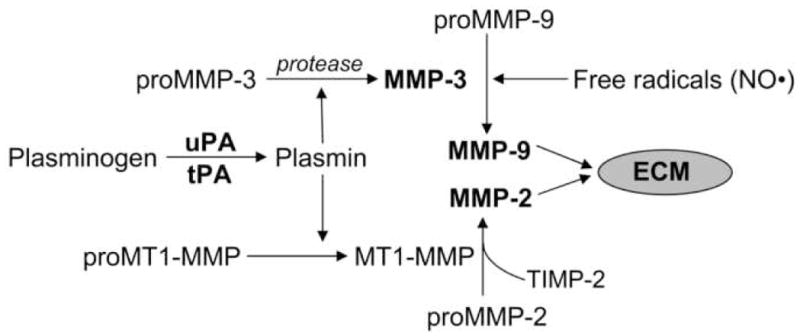Fig. 1.

Mechanisms of activation of MMPs. Plasmin plays an active role in the activation of MMPs. MT1-MMP (MMP-14) binds to TIMP-2 and proMMP-2 leading to the formation of catalytically active MMP-2. ProMMP-9 is activated by MMP-3 and free radicals (nitric oxide, NO•). Plasmin has been shown to activate proMMP-3. Recently, it was shown that there is an intracellular mechanism of activation of MMP-3 which involves a serine protease other than furin (Choi et al., 2008). Although proMMP-3 possesses the furin recognition sequence, the cleavage would leave 9 amino acids belonging to the prodomain resulting in a form which is not catalytically active (Choi et al., 2008).
